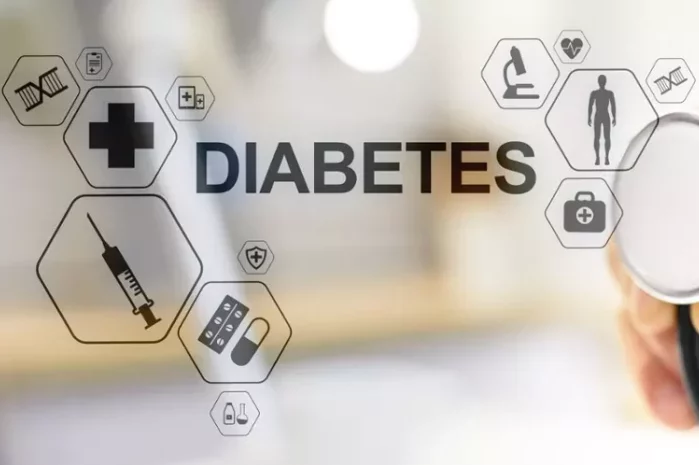Exercise plays a pivotal role in managing Type 2 diabetes, offering numerous benefits such as improved blood glucose control, enhanced insulin sensitivity, and overall better health. Understanding which types of exercise are most effective and how to integrate them into your routine can help you achieve optimal diabetes management. This article explores various types of exercise beneficial for individuals with Type 2 diabetes, their effects on blood sugar levels, and practical guidelines for incorporating them into daily life.
Understanding Exercise and Its Impact on Type 2 Diabetes
The Role of Exercise in Diabetes Management
Blood Glucose Control: Exercise helps lower blood glucose levels by increasing the uptake of glucose by muscles during physical activity. This effect can persist for several hours after exercise.
Insulin Sensitivity: Regular physical activity improves insulin sensitivity, making cells more responsive to insulin and helping maintain stable blood sugar levels.
Weight Management: Exercise helps in weight management and reduction, which is crucial for individuals with Type 2 diabetes, as excess weight can exacerbate insulin resistance.
Types of Exercise Beneficial for Diabetes
Different types of exercise can have various effects on blood glucose levels and overall health. The main categories include aerobic exercise, resistance training, and flexibility exercises.
Aerobic Exercise
Aerobic exercise, also known as cardiovascular exercise, involves activities that increase heart rate and breathing. It is highly effective in managing Type 2 diabetes due to its direct impact on blood glucose levels and overall cardiovascular health.
Benefits of Aerobic Exercise
Improved Cardiovascular Health: Aerobic exercise strengthens the heart and improves circulation, reducing the risk of cardiovascular complications associated with diabetes.
Enhanced Insulin Sensitivity: Regular aerobic activity improves the body’s ability to use insulin and manage blood sugar levels effectively.
Weight Loss: Engaging in aerobic exercise helps burn calories, contributing to weight loss and better weight management.
Types of Aerobic Exercise
Walking: Walking is a low-impact, accessible exercise that can be done anywhere. It’s ideal for beginners and can be easily incorporated into daily routines.
Running or Jogging: Running or jogging provides a more intense workout and can be beneficial for those who are more physically fit.
Cycling: Cycling, whether on a stationary bike or a regular bicycle, is a great aerobic exercise that also strengthens the lower body.
Swimming: Swimming provides a full-body workout with minimal impact on joints, making it suitable for individuals with joint issues or those looking for a low-impact exercise.
Recommendations for Aerobic Exercise
Frequency: Aim for at least 150 minutes of moderate-intensity aerobic exercise per week, or 75 minutes of vigorous-intensity exercise, spread over several days.
Intensity: Moderate-intensity exercise should allow you to talk but not sing comfortably. Vigorous-intensity exercise will make talking more difficult.
Duration: Each session should last at least 30 minutes, but shorter sessions can be combined to meet the weekly goal.
Resistance Training
Resistance training, also known as strength training, involves exercises that build muscle strength and endurance. It is essential for managing Type 2 diabetes as it helps improve insulin sensitivity and supports overall metabolic health.
Benefits of Resistance Training
Increased Muscle Mass: Building muscle mass helps improve glucose metabolism and insulin sensitivity.
Enhanced Metabolic Rate: Muscle tissue burns more calories at rest compared to fat tissue, contributing to a higher resting metabolic rate.
Improved Glycemic Control: Resistance training helps regulate blood sugar levels by increasing the storage of glucose in muscles.
Types of Resistance Training
Weight Lifting: Using free weights such as dumbbells and barbells helps build muscle strength and endurance.
Bodyweight Exercises: Exercises like squats, lunges, push-ups, and planks use your body weight as resistance and can be done anywhere.
Resistance Bands: Resistance bands provide a versatile and portable option for strength training exercises.
Recommendations for Resistance Training
Frequency: Engage in resistance training at least two non-consecutive days per week to allow for muscle recovery.
Intensity: Perform 8-12 repetitions of each exercise, targeting major muscle groups. Aim for 2-3 sets per exercise.
Progression: Gradually increase the weight or resistance as you become stronger to continue challenging your muscles.
Flexibility and Balance Exercises
Flexibility and balance exercises are essential for overall fitness and can help prevent injuries, improve mobility, and enhance quality of life.
Benefits of Flexibility and Balance Exercises
Improved Mobility: Stretching exercises increase the range of motion in joints and muscles, enhancing overall mobility.
Injury Prevention: Improved flexibility and balance help reduce the risk of falls and injuries, particularly as one ages.
Enhanced Coordination: Balance exercises improve coordination and stability, contributing to better functional performance in daily activities.
Types of Flexibility and Balance Exercises
Stretching: Incorporate static stretching exercises for major muscle groups, such as hamstrings, quadriceps, and back muscles.
Yoga: Yoga combines stretching, balance, and relaxation techniques, making it beneficial for flexibility, stress reduction, and overall well-being.
Tai Chi: Tai Chi involves slow, controlled movements that enhance balance, coordination, and mental relaxation.
Recommendations for Flexibility and Balance Exercises
Frequency: Aim to include flexibility and balance exercises in your routine at least 2-3 times per week.
Duration: Spend 10-15 minutes on stretching and balance exercises during each session.
Intensity: Perform stretches to the point of mild discomfort, not pain. Focus on controlled and smooth movements.
Practical Guidelines for Incorporating Exercise
Setting Goals
Individualized Goals: Set realistic and personalized exercise goals based on your current fitness level, health status, and preferences.
Short-Term and Long-Term Goals: Establish both short-term and long-term goals to keep motivated and track progress.
Monitoring Blood Sugar Levels
Before Exercise: Check your blood sugar levels before starting exercise to ensure they are within a safe range.
During Exercise: If engaging in prolonged or intense exercise, monitor blood sugar levels periodically.
After Exercise: Check blood sugar levels after exercise to observe how physical activity affects your glucose levels and adjust your diet or medication as needed.
Choosing Enjoyable Activities
Personal Preferences: Select exercises and activities you enjoy to increase adherence and make exercise a sustainable part of your routine.
Variety: Incorporate a mix of aerobic, resistance, and flexibility exercises to keep your routine diverse and engaging.
Safety Considerations
Foot Care: Wear appropriate footwear to prevent injuries and check your feet regularly for any signs of sores or blisters.
Hydration: Stay hydrated before, during, and after exercise to maintain optimal fluid balance.
Consultation: Consult with your healthcare provider or a fitness professional before starting a new exercise program, especially if you have any underlying health conditions or concerns.
See also: What Type of Exercise Is Best for Managing Type 2 Diabetes?
Conclusion
Exercise is a cornerstone of effective Type 2 diabetes management, offering numerous benefits including improved blood glucose control, enhanced insulin sensitivity, and better overall health. By incorporating a balanced mix of aerobic exercise, resistance training, and flexibility exercises into your routine, you can achieve better diabetes management and enhance your quality of life.
Setting realistic goals, monitoring your blood sugar levels, and choosing enjoyable activities can help you stay motivated and make exercise a sustainable part of your lifestyle. Remember to consult with your healthcare provider to tailor an exercise program that meets your individual needs and health conditions. With the right approach, exercise can be a powerful tool in managing Type 2 diabetes and achieving long-term health and well-being.
Related topics:
What Green Vegetable Causes Type 2 Diabetes?

























